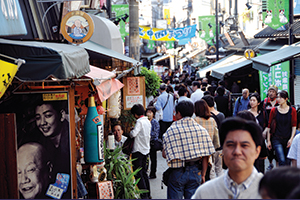 Jokingly called the dead center of the capital by some locals (as a result of the huge Yanaka Reien cemetery that many still refer to as Yanaka Bochi), Yanaka and its surrounds have a lot to offer to short-term visitors and long-time locals. This is one of many so-called downtown locations in Tokyo that should not be missed.
Jokingly called the dead center of the capital by some locals (as a result of the huge Yanaka Reien cemetery that many still refer to as Yanaka Bochi), Yanaka and its surrounds have a lot to offer to short-term visitors and long-time locals. This is one of many so-called downtown locations in Tokyo that should not be missed.
Along with the older areas of Asakusa and Ueno, this is an area in which the true spirit of the locals is always present. Unlike the other two locations, however, this is a neighborhood that looks much as it did in the early to mid-20th century, having miraculously escaped much of the fire-bombing inflicted on the capital in the closing days of World War II.
Best accessed by way of Nippori Station on the JR Yamanote Line, or Sendagi Station on the Chiyoda Subway Line, Yanaka is more often than not approached by tourists via the road leading from the cemetery that stands adjacent to the JR station.
As macabre as it may sound to some, the graves are well worthy of investigation, and a small office on the right of the main road (with the station at your back) offers maps free of charge, although they do have a box in which you can insert a few coins as a donation towards printing fees. The map itself, although entirely in Japanese, has a list of seventy–six internees famous in a range of fields.
Kabuki actors, former politicians, the 15th and final Tokugawa Shogun – Yoshinobu – and several high profile criminals in their time such as Oden Takahashi, the last woman to be beheaded as a punishment (in 1879) all occupy space, as do a pair of former sumo grand champions – Hitachiyama and Tsunenohana.
Just off to the north of the main grave area, a road leads past the atelier-turned-museum of one Asakura Fumio (1883 – 1964), a famed sculptor of the Taisho and Showa eras. Turn left at the next main junction and you are looking down a steep slope that eventually becomes what is known as Yanaka Ginza, a street roughly two hundred meters long, lined with quaint old stores peddling everything you would associate with an olde worlde area before the age of supermarkets and online shopping.
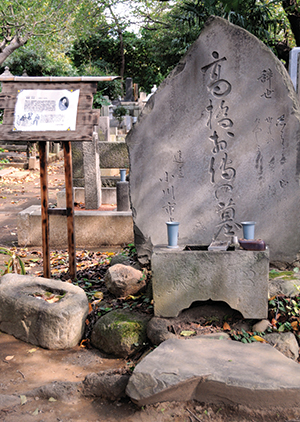 Tiny soba restaurants, liquor shops specializing primarily in sake and soy sauce – one of those uniquely Japanese connections few have ever understood – and a whole range of clothing and footwear stores covering all budgets and body parts stand shoulder to shoulder with restaurants that have likely been run by the same family for generations. A number of trendy coffee shops and fashionable joints have also opened in the last few years, taking advantage of the flow of visitors looking to sample yesteryear Tokyo.
Tiny soba restaurants, liquor shops specializing primarily in sake and soy sauce – one of those uniquely Japanese connections few have ever understood – and a whole range of clothing and footwear stores covering all budgets and body parts stand shoulder to shoulder with restaurants that have likely been run by the same family for generations. A number of trendy coffee shops and fashionable joints have also opened in the last few years, taking advantage of the flow of visitors looking to sample yesteryear Tokyo.
Most offer their products – be they for consumption or wearing – cheaper than at most other similar places in Tokyo, and the staff take pride in providing a level of service fast dying out. Conversation bordering on banter with many of the store and restaurant owners comes with the territory of this down to earth corner of the capital. A quiet seat taken outside a store, enjoying a beer on a warm afternoon or nibbling on one of the many types of croquette offered at several of the stores is the perfect way in which to watch the world go by, at the pace for which Yanaka is famous: Slow with capital ‘S’. The majority of the older folk seem to know each other, with many of those venturing out to do their daily shopping seeming to spend more time chewing the local fat than putting things in their baskets that double as seats. Be sure to ask the friendly locals for recommendations if you are after a certain type of food, or for directions if you have wandered off the main strip and into the maze-like backstreets. They will likely go out of their way to point you in the right direction, and if you are fortunate enough to strike up a conversation their pride in the local area will shine through.
One aspect of Yanaka that cannot really be labeled cultural or historical is the presence of an army of cats along the main street, atop the canopies protecting the storefronts from sunlight, and in and around the shop doorways. So many felines call the area home that the locals have now adopted their presence, turning them into something of a tourist attraction in their own right, with many of the area’s local craft shops selling items related to cats in one shape or another.
Exiting Yanaka at the opposite end of the graveyard access route, and after another left turn, will bring you into a far more sparsely-lined street of stores and traditional old houses, leading snakelike to Sendagi Station. This area has also retained much of its historical and cultural heritage, and is worth spending an hour or two looking around, time permitting.
Story by Mark Buckton
From J SELECT Magazine, January 2010

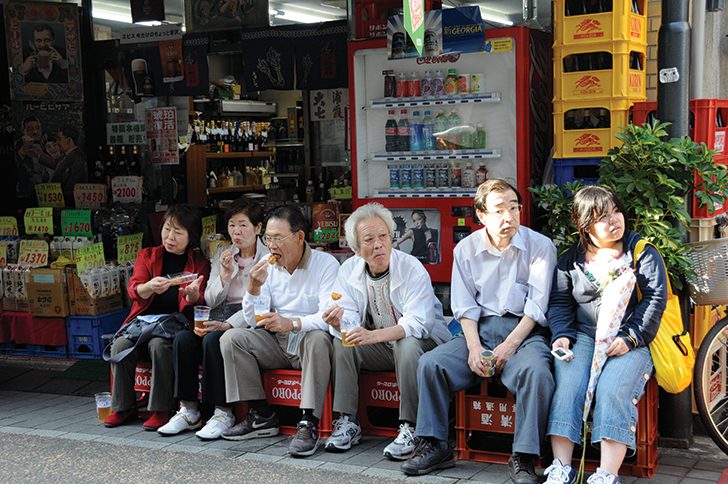





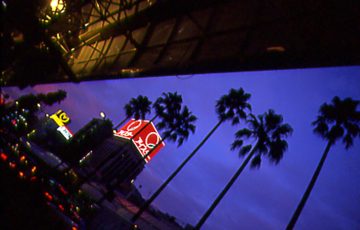

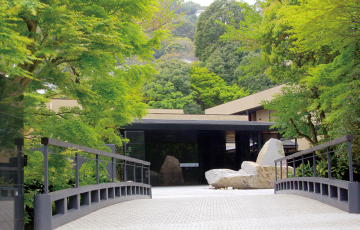
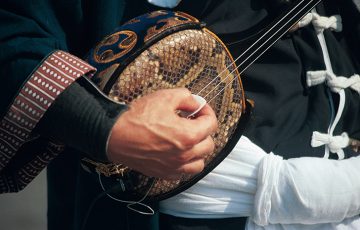
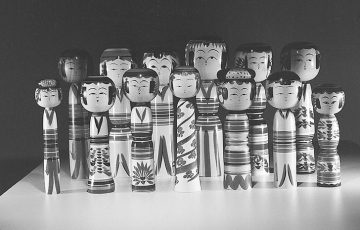



Recent Comments